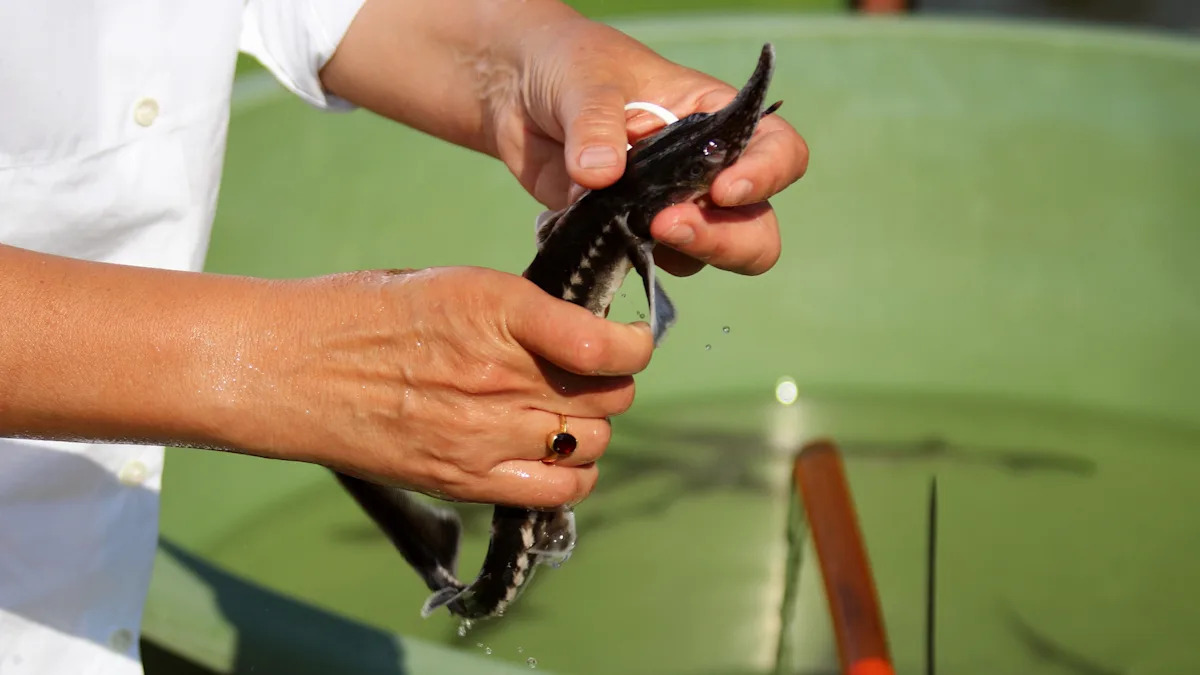For the first time, members of the St. Croix Chippewa Tribe have released young lake sturgeon into Clam Lake as part of a restoration project.
According to Wisconsin Public Radio, the St. Croix Chippewa began surveying sturgeon in the state’s lake about five years ago. Since then, the Tribe has invested over $1 million into a hatchery expansion for the fish.
The St. Croix Chippewa and the Wisconsin Department of Natural Resources gathered sturgeon eggs from the Yellow River earlier this year, per WPR. Raised in the hatchery for six months, about 400 fingerlings were released into the lake in mid-October. The public event reportedly included a prayer in Ojibwe from Tribal Elder Bruce Sonnenberg.
“We do actively harvest sturgeon in the spring, Tribal Chairman Conrad St. John told WPR, explaining the species’ significance. “To keep those harvesting efforts available … we’d like to restore the resources [to] keep them plentiful for many generations to come.”
The St. Croix Chippewa hope that at least 80 percent of the fish released into Clam Lake survive, per the radio outlet. They plan to continue repopulation efforts for at least the next 20 years — that’s about how long it takes for a female sturgeon to mature and reproduce.
“To repopulate, to put back in what [the harvesters] take out,” Tribal council member Leslie Billy told WPR. “I think that’s amazing that we can do that.”
Lake sturgeon have existed for centuries, with some estimates dating back 150 million years. They can grow up to seven feet long and live up to 150 years. Sonnenberg shared, according to the Burnett County Sentinel, “My grandfather always said, ‘you know there’s fish longer than the boat here … in Clam Lake.'”
Meanwhile, their numbers have been dwindling.
Indigenous communities and environmental advocates have worked to restore the threatened species. That’s great news for the whole habitat — just one reason is that, according to Sea Life Michigan, the animals help keep the water clean by eating decaying organisms and invasive species. More broadly, the U.S. Fish and Wildlife Service has asserted, the fish can help us understand ecosystem health and water quality because they require clean water to live and reproduce.
Many people in the region are grateful for the Clam Lake effort. “It’s loving people, caring people, who want to keep all this alive,” Sonnenberg told WPR.
According to the Sentinel, the St. Croix Chippewa have also raised thousands of Walleyes in recent years.
Join our free newsletter for good news and useful tips, and don’t miss this cool list of easy ways to help yourself while helping the planet.

